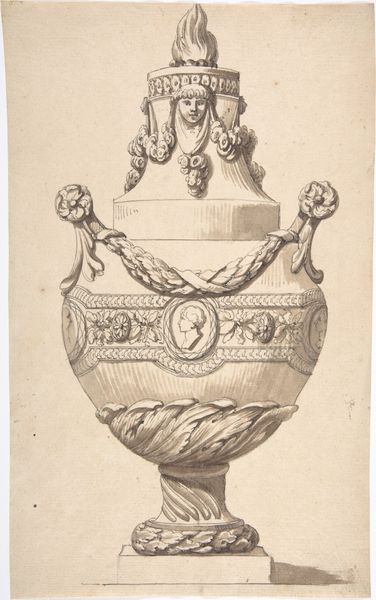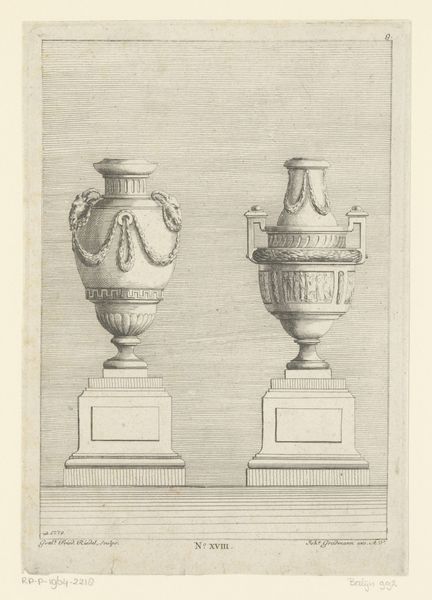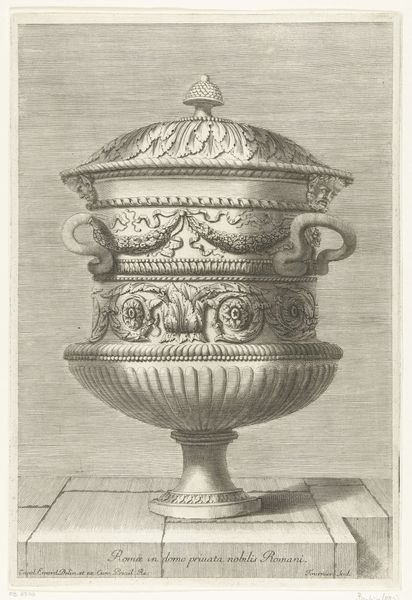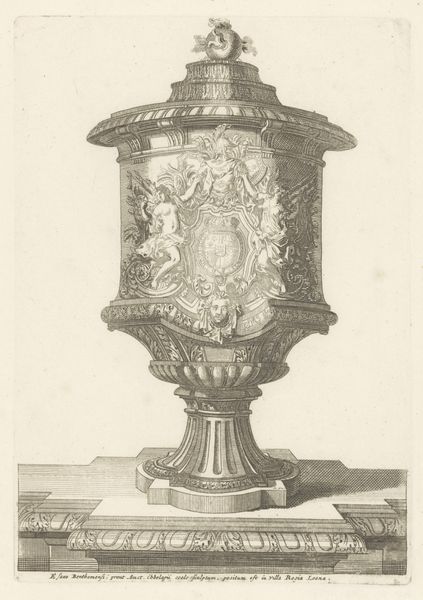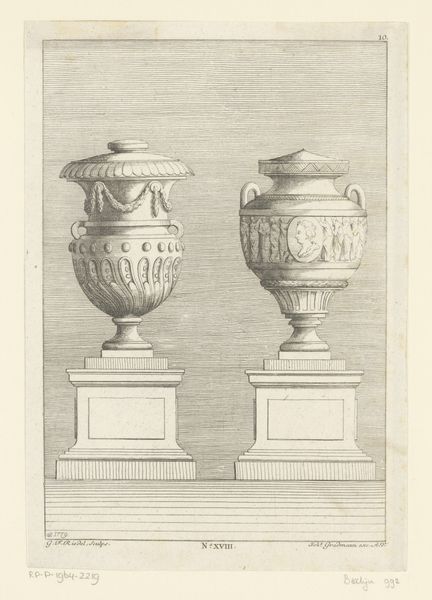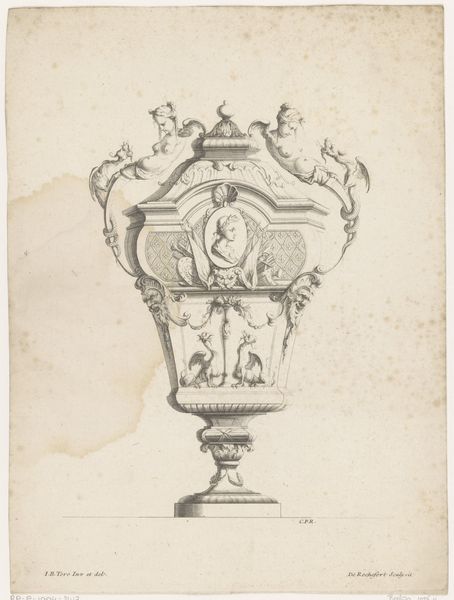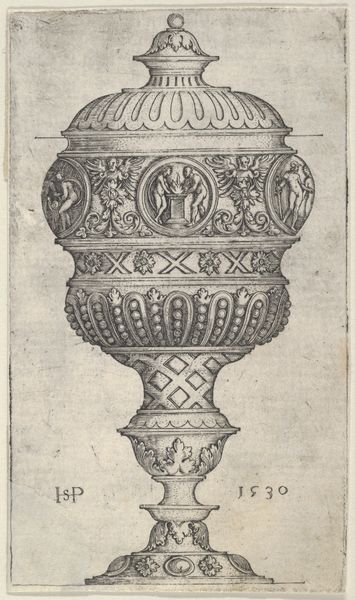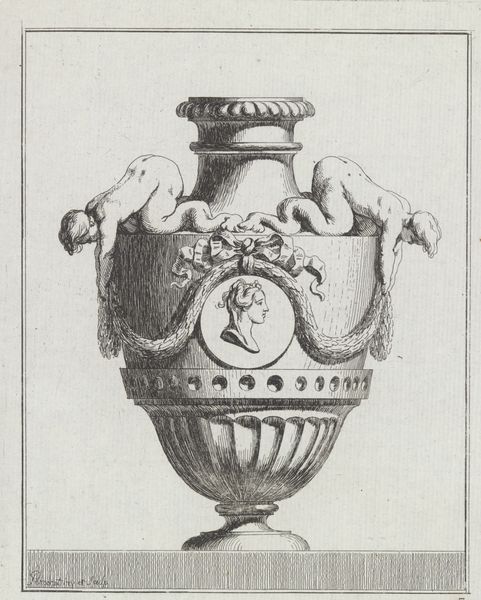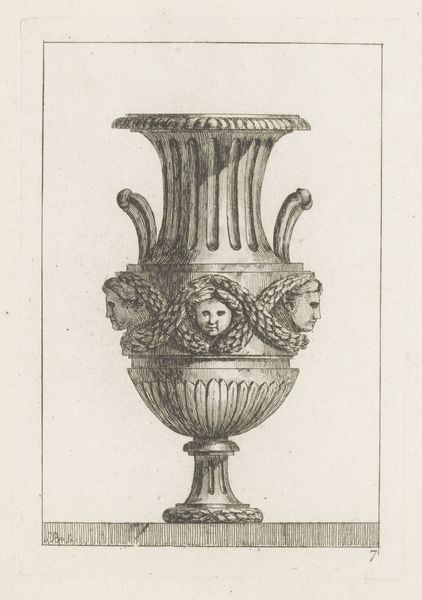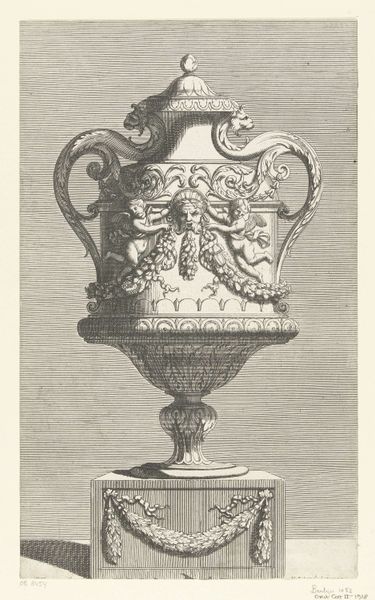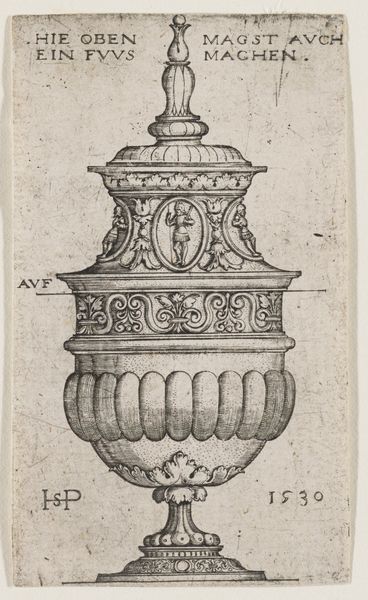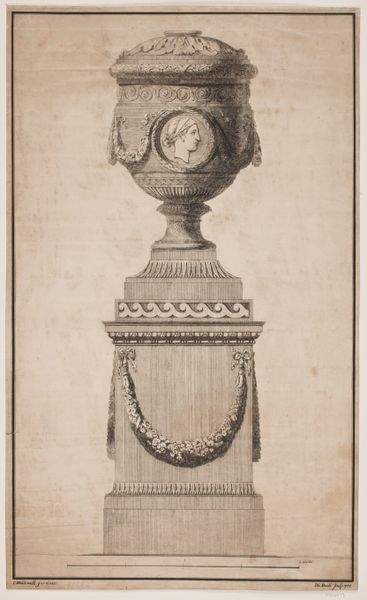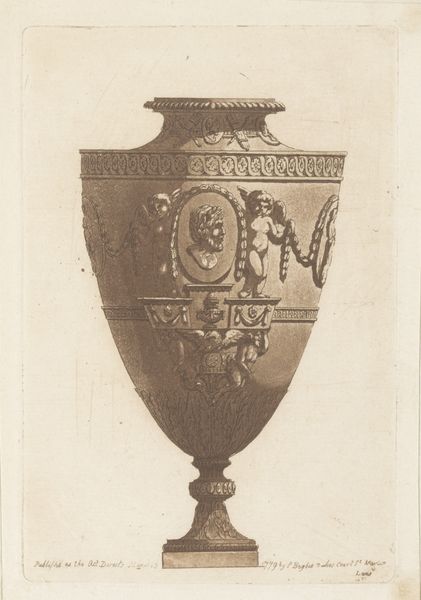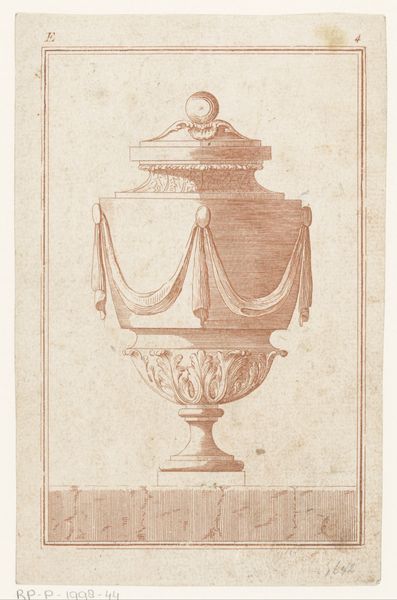
drawing, engraving
#
drawing
#
neoclacissism
#
engraving
Dimensions: height 168 mm, width 131 mm
Copyright: Rijks Museum: Open Domain
Editor: This is "Suikerpot," a 1789 drawing and engraving by de Saint-Morien, housed here at the Rijksmuseum. The precision is astonishing. I'm struck by how the artist captured light and shadow purely through line work. How would you approach a formal analysis of this piece? Curator: Note how the artist employs vertical hatching across the main cylindrical body, creating an illusion of volume and texture, contrasted with the flowing, organic patterns etched onto its surface. Semiotically, the verticality perhaps symbolizes order, which contrasts the ornamentation— a signal of luxury. Editor: So the tension between order and decoration defines its aesthetic impact? Curator: Precisely. The meticulous arrangement of motifs —the festoons, rosettes, and foliage— exhibits a controlled elegance. The proportional balance, from the foot to the rim, creates a visual harmony reflective of neoclassical ideals. How do you interpret the line quality? Editor: The variations in line weight are impressive, some really bold, others extremely thin and delicate, give the impression of depth and dimension, which I found interesting. Curator: Indeed, the line variations articulate the form, delineate spatial relationships, and construct this rather tangible visual experience. Do you notice any ruptures? Editor: While it embraces symmetry, there's something slightly cold about its perfection, even mechanical in its execution. Is this common for Neoclassical works? Curator: An astute observation. That sense of detached precision, you're right, is key to neoclassical art. The intention wasn't emotional expressiveness but intellectual clarity, formal structure and the essence of ideal form. This examination underscores the power of visual analysis.
Comments
No comments
Be the first to comment and join the conversation on the ultimate creative platform.
